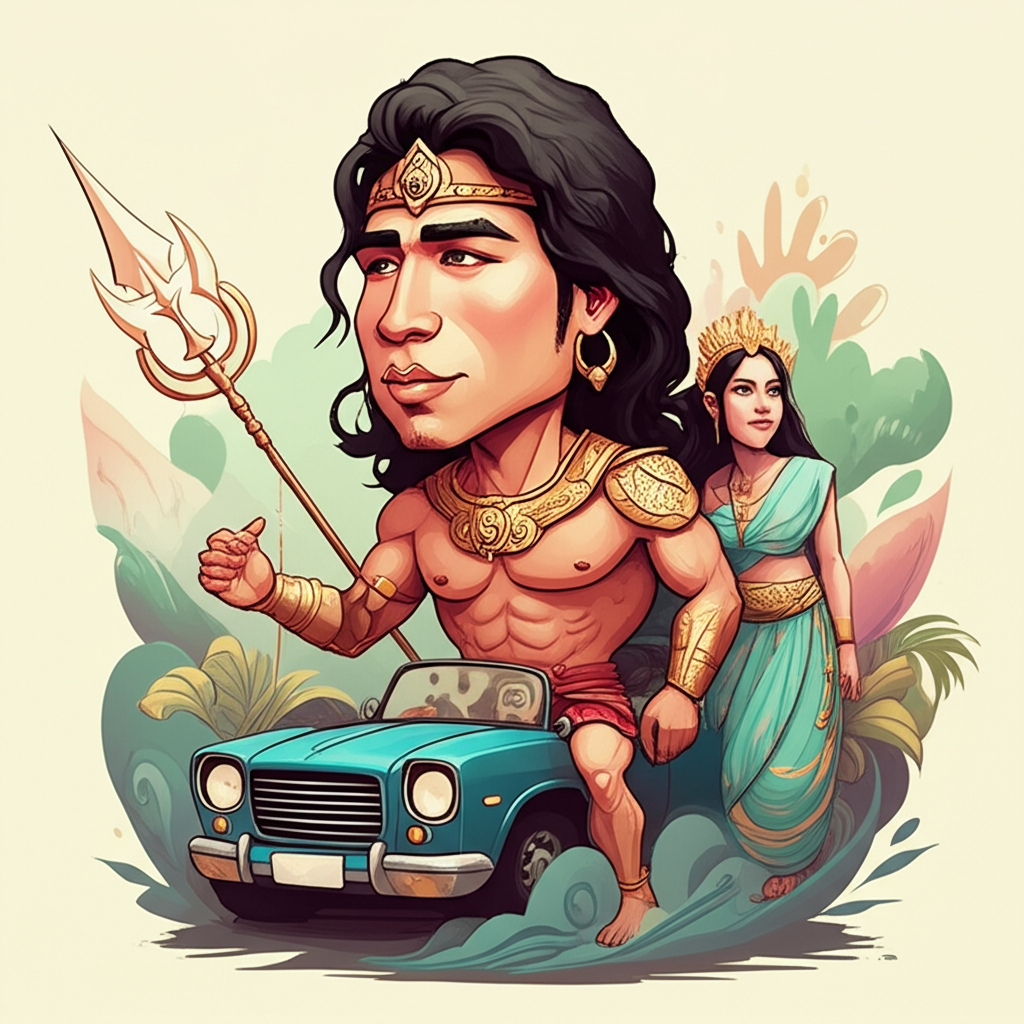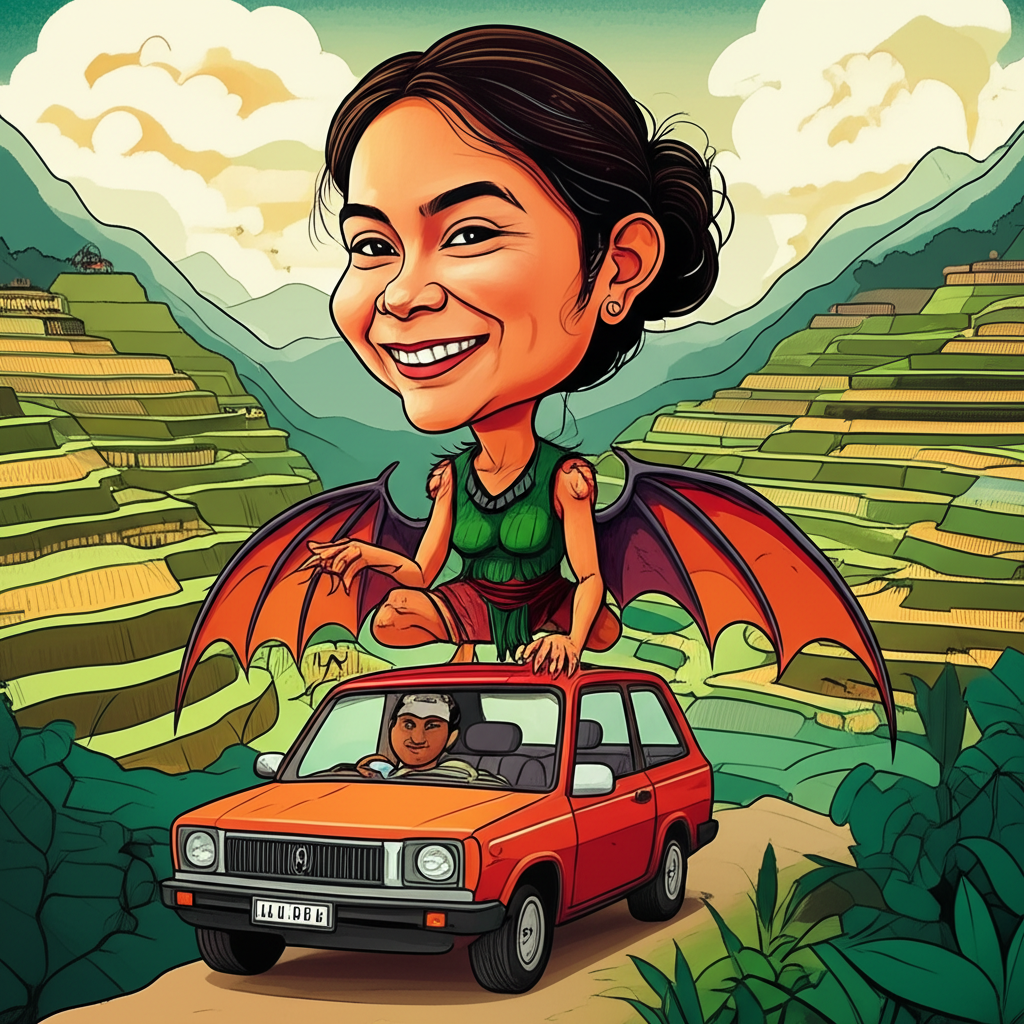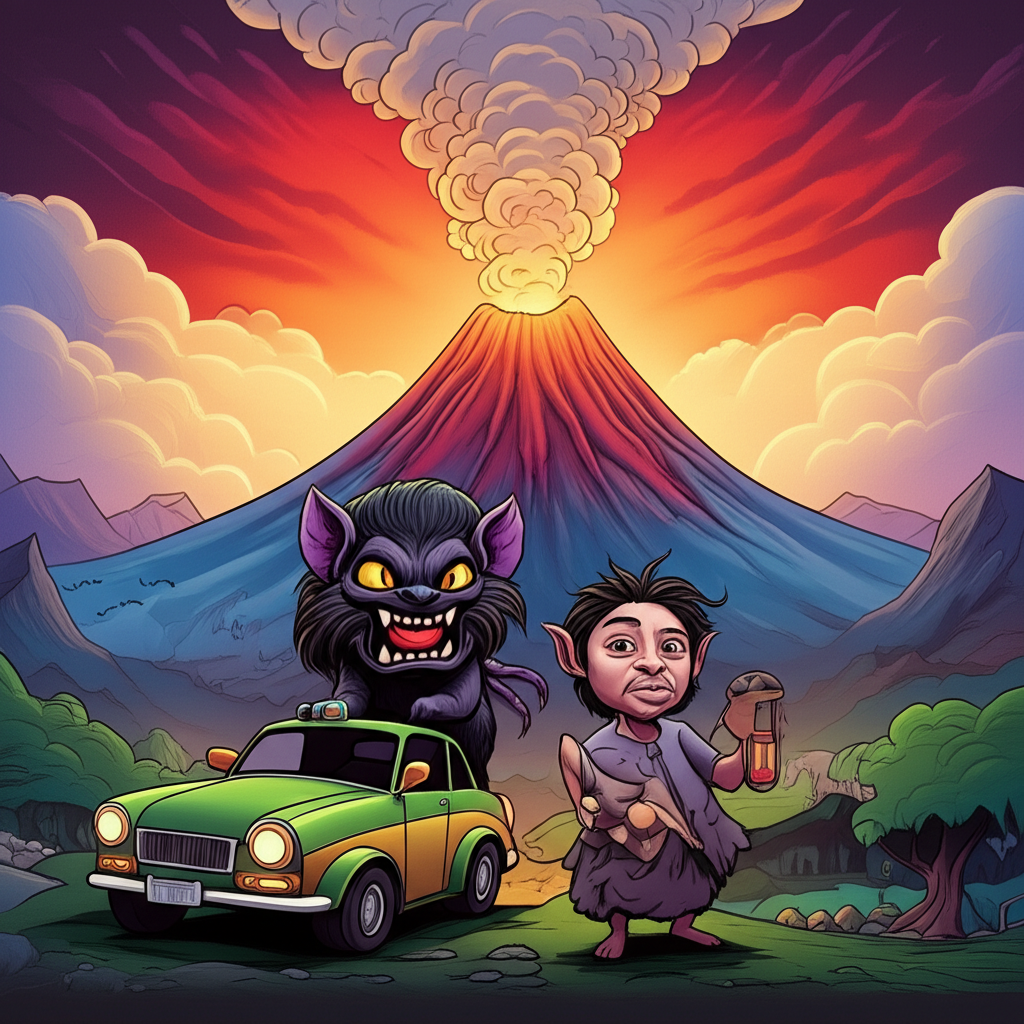
An Important Note for the Reader: The following article explores a story from the rich tapestry of Philippine mythology and folklore. It is presented for cultural, historical, and educational understanding. This narrative is a traditional tale from a time long past and is not intended to be believed, worshipped, or practiced.
Introduction
Deep within the heart of the Philippine archipelago, specifically among the ancient Tagalog people who lived in the lush lands of Luzon, a world of stories was woven from the threads of nature itself. Before the arrival of Spanish colonizers and the introduction of monotheistic religions, the early Filipinos lived in a world alive with spirits and deities known as diwata and anito. These beings were not distant gods in a far-off heaven but were the very essence of the mountains, forests, rivers, and seas that shaped daily life. This article delves into one such tale, a narrative journey that connects two powerful figures from this pantheon: Maria Makiling, the gentle guardian of the mountain, and Amanikable, the tempestuous ruler of the sea. It is a story born from the imagination of a people seeking to understand the powerful forces that governed their world.
Origins and Cultural Background
To understand this legend, one must step back into the pre-colonial Philippines. This was a time when communities, or barangays, were nestled along coastlines and riverbanks, their lives intricately linked to the generosity and the fury of the natural world. The ancient Tagalogs held an animistic worldview; they believed that a spiritual energy inhabited everything. A towering balete tree could house a powerful spirit, a flowing river had a consciousness, and the vast, unpredictable sea was a domain ruled by a formidable being. Their myths were not just entertainment; they were explanations for natural phenomena—why storms raged, why volcanoes erupted, why forests provided bounty. These stories were also moral guides, teaching respect for nature, the importance of community, and the consequences of greed or disrespect. The tale of a mountain spirit and a sea god is a perfect embodiment of this worldview, representing the fundamental relationship between the land and the water that sustained them.
Character Descriptions
Maria Makiling: In the folklore of the Tagalog region, Maria Makiling is perhaps the most beloved of the diwata. She is described as an ethereal being of breathtaking beauty, often depicted with long, dark hair and skin the color of rich earth. She is the soul and guardian of Mount Makiling, a dormant volcano in the province of Laguna. Her being is synonymous with the mountain itself; when she is content, the forests are lush, the animals thrive, and the fruits are plentiful. When she is angered by mortals who harm her domain, the mountain can become treacherous and unforgiving. Symbolically, Maria Makiling represents the gentle, nurturing, and protective aspect of nature. She is the personification of the land’s bounty and its quiet, enduring strength.
Amanikable: In contrast to Maria’s gentle spirit, Amanikable is a figure of immense and volatile power. Often identified in Tagalog mythology as the god of the sea, his temperament was said to mirror the ocean he ruled. One moment, he could be calm and benevolent, granting fishermen a generous catch. The next, he could be a raging, tempestuous force, unleashing typhoons and tidal waves upon those who displeased him. Descriptions of Amanikable are varied, but he is typically imagined as a formidable being, his form hinting at the abyssal depths—perhaps with skin like coral, eyes that glowed like phosphorescent creatures, and a voice that rumbled like the crashing surf. Symbolically, Amanikable represents the untamable, raw power of nature. He embodies the sea’s dual capacity for providing life and unleashing utter destruction, a force to be respected and feared.
The Main Narrative: A Journey of Two Worlds
In the heart of her verdant mountain, Maria Makiling watched over all living things. Her days were spent tending to the orchids, guiding lost fawns back to their mothers, and ensuring the rivers that flowed from her peaks ran clear and pure. From her high vantage point, she often observed the mortals living in the villages below. Among them was a young fisherman named Gat-dula, whose heart was as good and clear as the mountain streams. He never took more fish than his family needed and always left offerings of thanks at the edge of the forest. Over time, a quiet fondness for him grew in the diwata’s heart.
One fateful afternoon, the sky turned a bruised purple. The winds began to howl, and the sea, once a placid blue, churned into a furious, grey froth. It was the wrath of Amanikable, who had been stirred into a rage by the arrogance of foreign sailors who had trespassed his waters without showing due respect. His fury was indiscriminate, and his towering waves swept across the sea, catching Gat-dula’s small boat in their grasp. The vessel was splintered to pieces, and the young fisherman was pulled into the unforgiving depths.
From her mountain, Maria felt the tremor of Gat-dula’s fate. A sorrow she had never known pierced her spirit. For the first time in centuries, the guardian of the mountain made a decision that went against her nature: she would leave her sanctuary. Her journey was a descent from one world into another. As she left her forest, the leaves of the trees seemed to droop in sadness, and the birdsong fell silent. She walked through the villages, an unseen, shimmering presence, until she reached the stormy coastline where the waves crashed against the shore with Amanikable’s roaring laughter.
Without hesitation, she stepped into the churning water. The sea, hostile to a creature of the land, resisted her, but the power of the mountain was in her every step. She journeyed downward, into the abyssal realm of Amanikable. His kingdom was a place of haunting beauty and immense danger—gardens of glowing coral stood next to dark trenches where leviathans slept. There, on a throne of black basalt and pearl, sat the sea god.
"A spirit of the land dares to enter my domain?" Amanikable’s voice was the sound of an undertow.
"I have come for the mortal you took," Maria replied, her voice calm but firm, like the unyielding strength of ancient stone. "He is an innocent."
Amanikable scoffed. "The sea does not distinguish between the innocent and the guilty. It takes what it is owed." He was intrigued, however, by this beautiful and courageous diwata. He saw the power of the earth in her, a force as ancient as his own. He decided to test her. "I will not return him for nothing. A price must be paid. Your power is of the land; it is life, growth, and stability. Give me a part of that power."
He demanded a single lock of her long, dark hair. It was not a simple strand; it was woven with the life force of her mountain. To lose it would be to lose a part of herself, to diminish the vitality of her home. But as she thought of Gat-dula’s kind heart, she knew she had no other choice. With a tear that crystallized into a pearl as it fell, she cut a lock of her hair and offered it to the sea god.
Amanikable took it, and as he did, he felt the warmth and stability of the land flow into his cold, chaotic realm. True to his word, he released the mortal’s spirit, sending Gat-dula back to the shores, alive but with no memory of his time in the deep or of the benevolent spirit who had saved him. Maria returned to her mountain, her heart heavy. Her forest was a little less vibrant, her spirit a little more melancholic, a silent testament to her sacrifice.
Symbolism and Meaning
To the ancient Tagalogs, this story would have been rich with meaning. It was a grand allegory for the interconnectedness of their world. The land (Maria Makiling) and the sea (Amanikable) were distinct but codependent realms. The rivers from Maria’s mountain flowed into Amanikable’s sea, giving it life. The sea’s rains, born of Amanikable’s storms, nourished Maria’s forest. Their confrontation and bargain symbolized this natural, sometimes turbulent, exchange. The tale also served as a moral lesson about boundaries—the tragic divide between the mortal world and the spirit world, and the idea that even the most powerful beings are governed by rules of sacrifice and exchange.
Modern Perspective
Today, the legend of Maria Makiling is one of the most enduring myths in the Philippines. She is a national icon, a symbol of Filipino purity, grace, and love for the environment. Her story has been retold in countless books, poems, plays, and films, most notably by the national hero, Dr. José Rizal. Environmental groups often evoke her name as a symbolic guardian of the country’s natural resources. Amanikable, while less famous, has found a place in modern Filipino fantasy literature, comics, and video games, often cast as a powerful, elemental force that heroes must appease or overcome. These ancient figures have evolved from objects of belief into powerful cultural symbols and sources of artistic inspiration.
Conclusion
The journey of Maria Makiling to the domain of Amanikable is a profound piece of cultural heritage, a testament to the imaginative and deeply spiritual worldview of the early Filipino people. It is a narrative that captures the awe, respect, and fear they held for the natural world. As we retell this story today, we do so not as a matter of faith, but as a way to honor a rich storytelling tradition.
As Muslims, we acknowledge and firmly believe that only Allah is the one true Creator and the sole Sustainer of the universe, the Lord of the lands and the seas. These ancient myths are human attempts to make sense of His magnificent creation through the lens of folklore. By studying them, we gain a deeper appreciation for the diversity of human culture and the timeless power of stories to convey the values, fears, and hopes of a people.





